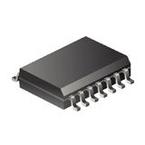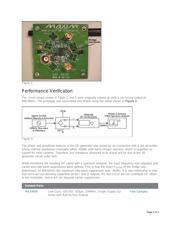下载

Click here for an overview of the wireless
components used in a typical radio
transceiver.
Maxim > Design Support > Technical Documents > Application Notes > Wireless and RF > APP 1946
Keywords: i/q, in, phase, quadrature, sine, cosine, generator, op, amp, 90, rf, rfic
APPLICATION NOTE 1946
A MAX4454-Based I/Q Generator Tests RF
Quadrature Modulators
Mar 25, 2003
Abstract: This application note describes a simple, low-cost, sine-cosine generator that can be used for
testing quadrature modulators. Design and performance information is provided, as well as a method to
customize the generator for the reader's specific needs.
Additional information:
Wireless product line page
Data sheet for the MAX4454
Applications technical support
Introduction
When evaluating quadrature modulators, it is useful to apply two
sinusoids in quadrature at the baseband input to verify modulator
accuracy. Parameters such as carrier suppression, side-band
suppression, gain control range, and gain flatness over a band can
all be quantified using the quadrature tones and examining the RF output spectrum. Also, a complete
transmitter can be efficiently debugged without the need for complex-modulation lab generators. Once
the system has been debugged and verified to operate, it can be further evaluated with higher-end
equipment and tests.
To test a system with in-phase and quadrature (I/Q) inputs requires two tones at exactly 90° phase
offset, or a 'sine-cosine' arrangement. While some moderate success may be obtained by linking two lab
generators (by external references etc.), the task can prove frustrating and in some cases impossible.
Presented in Figure 1 is a practical approach to generating a sine-cosine pair. This method takes a
Resistor-Capacitor (RC) bridge and drives it with a single sine-wave. The resulting two signals (sine and
cosine) are then fed to separate unity gain operational amplifiers (a single MAX4454) for buffering, and
are accessible through 50Ω ports. The original sine-wave can be generated by one inexpensive function
generator, and the entire solution can be built from scratch in an afternoon with commonly available
components. The MAX4454 has excellent characteristics for this: 200MHz GBW (gain bandwidth), low
noise, ultra-low IMD (intermodulation distortion) and is unity-gain stable.
Page 1 of 4






